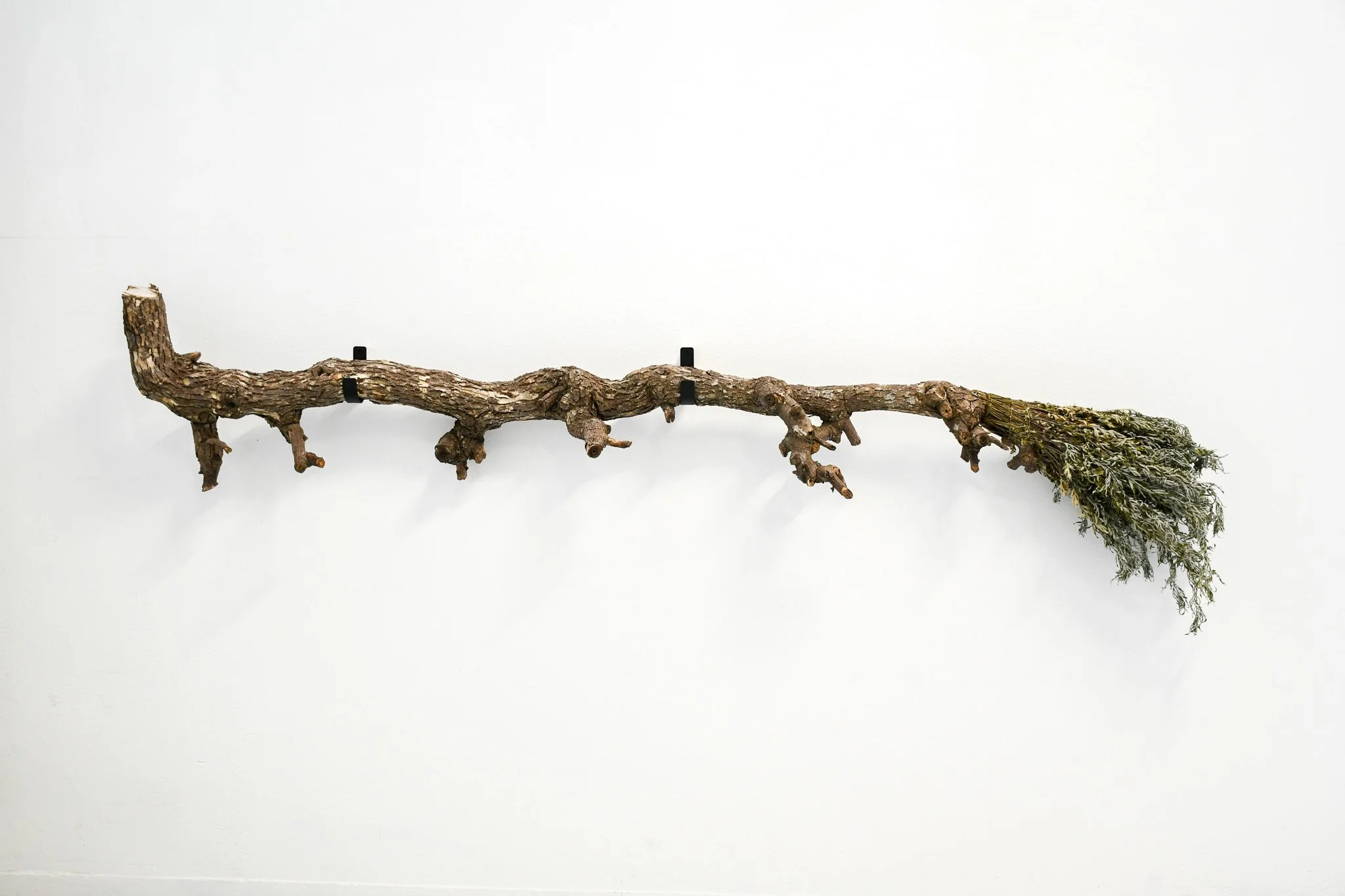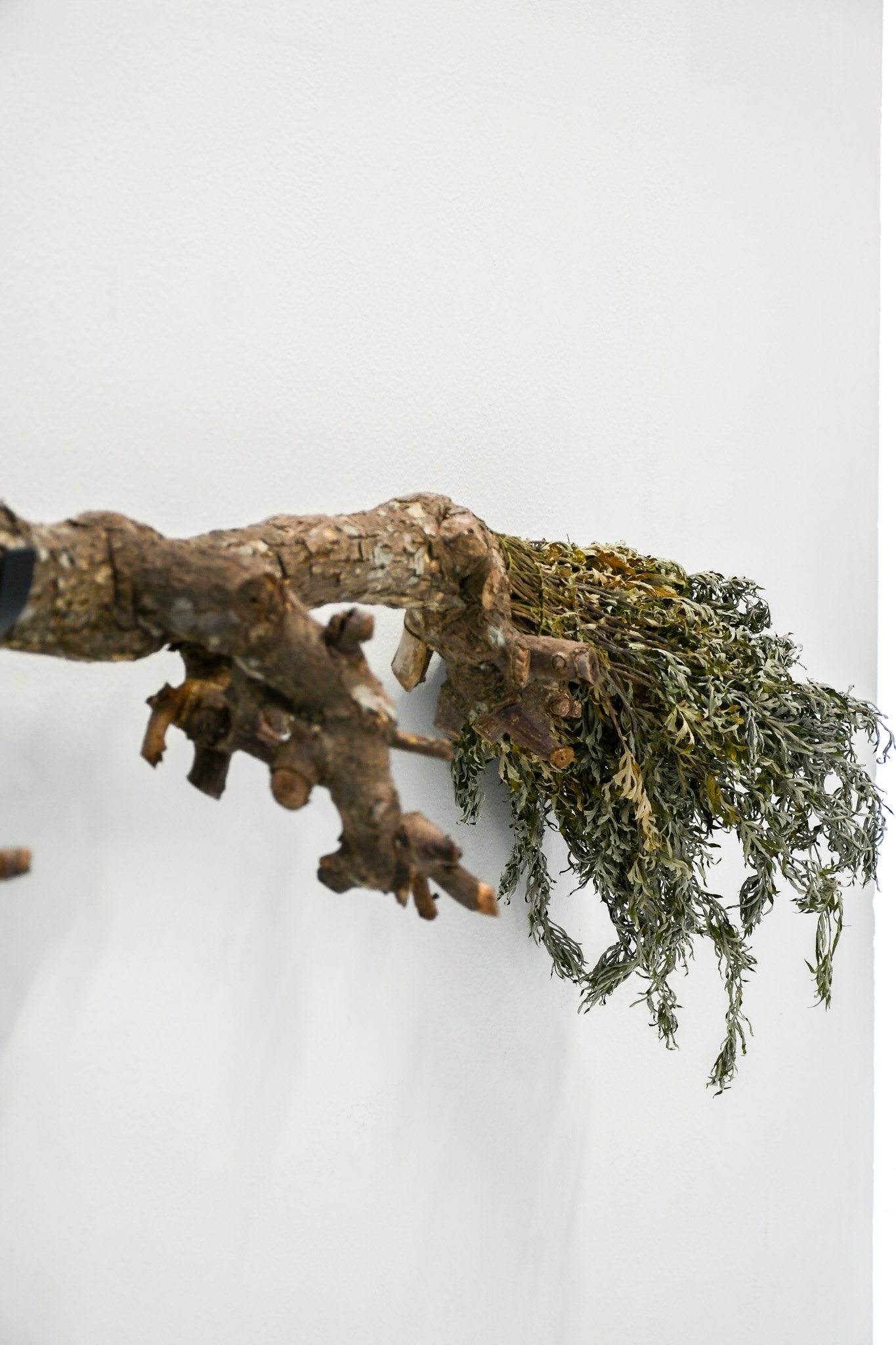Peeing in the Garden: on Interspecies Kinship and Witchcraft (2025)
When I was younger, my grandmother used to encourage me, along with my cousins and sister, to pee on the vegetable garden. We were children, of course, giggling, flushed with mischief, but she was serious: “You are watering the kiwis,” she’d say, brushing her hands on her multipurpose apron, where she kept all the objects in the world. That soil was so fertile that even stolen flower stems and random seeds would sprout as if they had finally found home. Our warm bodies became part of the land’s nourishment, a closed circuit of intake and return. We ate from the garden and gave back to it, and the idea of eating vegetables watered by our own pee never deterred us from our daily soups. Other plants populated the garden, in a cacophony of colours, scents, and functions. We ran to find four-leafed clovers, played among the apple-mint, avoided stinging nettles, and waved to the mugwort from afar.
Intimate ties existed between our bodies and the land: urine nourished the vegetables, leftovers fed the chicken, and their waste enriched the soil. Grandma knew how to heal nettle stings with mallow, bee stings with plantago. Camomile tea was the fix for nearly everything. In her house, we played barefoot until exhaustion - making dirt and carrot soups, podding broad beans in exchange for stories, washing underwear and tea towels in the same water in the stone wash trough - until we fell asleep mid-afternoon, faces blushed, dreams pending. The liminal spaces between clean and contaminated, real and magical, awake and asleep, skin and soil, were lived with intensity and joy.
There was no clear line between the domestic and the cosmic. Any household chore could be a chant to the Big Mother. Plants were kin to eat and to heal, their knowledge carried in gossip, in tales, in songs. Who knows if urine really helped the plants? But grandma said so, and we followed. We were raised to be magical: tender, embodied, intuitive, attuned. To find kinship in raspberry bushes, to trust that carrots would communicate when they were ready for harvest. All of it could be true, no scientific proof required. My grandma never called her work witchcraft, but there was everyday magic in her hands. She was a green-thumbed woman, a moon-follower, a lover of homegrown teas and enchanted tales, a clever educator to seven children and ten grandchildren. On Carnival, she would say that she was dressed up as a ‘normal person’, and that on all other days, she wore her real costume as a witch. I always suspected it was not a joke, as witchcraft is not only about brooms and cauldrons - even though she cooked weekend meals for thirty in a pot just as big. Witchcraft is a practice of wisdom and care: being a companion to plants and knowing all the tricks for interspecies cohabitation. As much as the broom can be a cleaning tool, an educational agent, and a tool for a potential flight, witchery is a daily practice of tending to others, allowing for dreams, and taking an active part in the systems of living and dying.
For centuries, across Europe, elders just like her - healers, midwives, herbalists - were persecuted for their wisdom. The witch hunts of the Early Modern period were a deliberate dismantling of community-based knowledge and land-connected care. What was once passed from grandmother to granddaughter was reframed as demonic. The ability to listen to plants, to know when to harvest or how to blend, was recast as heresy and punished in the most horrific ways. The witch hunt sent the base for a capitalist economy to emerge, as Silvia Federici writes in Caliban and the Witch:
‘The battle against magic has always accompanied the development of capitalism, to this very day. Magic is premised on the belief that the world is animated, unpredictable, and that there is a force in all things…’ (2004, 188)
Today, the hunt for women’s knowledge, reproductive rights, and independence persists as a stubborn shadow of that past, through far-right policies and propagandistic strategies. The repression draws us further from the land, from more-than-humans as family, and from magical thinking as a methodology for alternative world-building. Witchcraft is urgent in times of isolation and inaccessibility to our ancestry. While my childhood was driven by magic and dreams, I soon learned in school that I must wash the cherry tomatoes before popping them in my mouth, that plants do not actually talk back, that knowing when to sow the cabbages according to ‘feeling the moon’ is not relevant or accurate, and that peeing in the garden is definitely not acceptable. I grew apart from the fertility of the soil, unlearned how to belong in the process of becoming, and distanced myself from the mysteries of not knowing but trusting. I was stripped of magic and thrown into a world where ‘time equals money’ and witchery is a ridiculous play for lunatics and outcasts, rather than a daily practice of living within an ecosystem.
I go back to her garden - where I belong - in my dreams, especially now that she has passed away. I dream of making witchcraft and reviving the garden. And in these dreams, I recall a specific place that we kids called ‘the pit’. It was just behind the raspberry bushes, a deep cut in the ground where our dirty water, both human and animal, would flow. At the time, it seemed a million metres down. In my dreams, just beyond its edge, the groups of Artemisia vulgaris (Mugwort, or Erva-de-São-João in Portuguese) wave at me. As kids, we would not dare go down into the ditch, so my relationship with this place and this plant was always one of distance and reluctance. We never touched. But Mugwort behaves like a witch herself: growing in the margins and forgotten plots, a companion to dreamers, magical beings, walkers between worlds. Burnt as incense, drunk as tea, or laid beneath a pillow, it is used to sharpen the senses of the dreaming body. To open the third eye. To loosen the knots of rational thought and make space for something else - Worlding? Kinning? It has survived through centuries of erasure, growing wild where it is not wanted. Enduring. It speaks in a language of persistence and possibility.
My grandmother never cut Mugwort for her oneiric capabilities - perhaps because none of us needed it, we dreamed so much all by ourselves. Now is the time when I need it the most: to remember to be a witch, as connected to the land as a cabbage to the moon, kin to the soil. I keep her under my pillow, and in my dreams, Artemisia vulgaris is also our grandmother, who lets us run free and pee in the cabbage field.
To Remember to be a Witch (2025)
Artemisia vulgaris, kiwi wood, cotton thread
Commissioned by Boca Aberta, Paralaxe, Porto PT
Photographs by Liyana Balkanska





